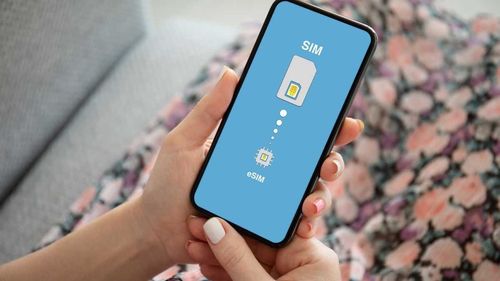The eSIM, or embedded SIM, was first introduced in 2016, bringing a major shakeup to a technology that had reigned supreme in cellular connectivity for 25 years. The SIM cards we’re all familiar with contain integrated circuits and are then inserted into mobile phones. An eSIM, meanwhile, involves a chip being embedded directly into the device. Users can then “install” SIM cards like any other software.
The first device to use an eSIM wasn’t actually a phone. In 2016, the same year the first eSIM standard was published, Samsung released its eSIM-enabled Gear S2 Classic 3G smartwatch. Leading smartphones soon followed, and consumers can now purchase phones with eSIMs from the likes of Apple, Google, Motorola, Nokia, Sony and Samsung. The Motorola Razr foldable smartphone doesn’t even have a SIM card slot – it only supports eSIMs.
The new technology brings many advantages over traditional SIM cards. Firstly, it’s much more convenient to buy an eSIM directly on your phone and install it immediately than going in person to a store and buying a SIM card. There’s also the environmental benefit – jet-setters can easily rack up piles of SIMs, which are made from PVC and will eventually have to be thrown away. eSIM technology is very flexible too when it comes to switching between providers. With eSIM-supporting iPhones, for example, you can install up to eight eSIMs and activate two phone numbers at the same time.
The eSIM really comes into its own for travelers. Going abroad becomes far more convenient when you don’t have to search out the right shop to buy a SIM card, make sure you’re getting the best deal, and possibly have to navigate a foreign language without mobile data at your disposal – speech translation is pretty good these days! An eSIM allows you to get sorted before you even travel, which means you can also avoid the nightmare of having to turn on expensive data roaming as you leave the airport.
There are many providers of eSIMs these days, offering competitive plans and great flexibility for all customers at a wide range of price points. As the market expands, more and more legacy operators are getting involved, with the likes of Lycamobile and Vodafone now offering eSIMs with instant delivery. Some providers even offer unlimited data.
One company that’s offering a connectivity solution incorporating eSIM data is WiFi Map. The app started out as a WiFi finder, allowing people anywhere in the world to add free public WiFi hotspots to a map, which would then be available for everybody else to see. It has been downloaded over 160 million times, with contributors adding millions of WiFi hotspots to the platform.
WiFi Map’s eSIM offer is the perfect complement to its free WiFi database. If you want to sit down for a few hours in a café and connect to fast internet so you can work, you’ll probably want to be using WiFi. If you’re on the move or looking for that café, however, eSIM mobile data will keep you connected when you’re out of range of a hotspot.
New technologies tend to work well together. After all, they’re often trying to solve similar problems. With the launch of the $WIFI utility token in April 2023, WiFi Map became a tokenized ecosystem offering, with different implications for its WiFi and eSIM services. Contributors can now participate in airdrop competitions, receiving $WIFI for adding hotspots to the platform, verifying networks and checking internet speeds. Earlier this month, the company announced results for its first competition since the token launch. Over the period from March 1 to April 30, almost 39,000 people received $WIFI for their contributions.
The top contributor added 612 new hotspots to the app and ran 229 internet speed tests, winning the grand prize of 3,000 $WIFI. This is where eSIMs come back into the equation – at the time of writing, the winner has received enough $WIFI to purchase 35 GB worth of eSIM mobile data directly in the app. $WIFI earned through airdrops can either be sent to an external wallet to be sold, traded or staked, or it can be stored in the in-app wallet and redeemed for data whenever is convenient.
Another bonus for people redeeming the new $WIFI token for eSIM mobile data is the cashback rewards feature. For every eSIM package redeemed in $WIFI, people receive 15% of the value of the data plan directly in their $WIFI wallet. For purchases made in fiat, 3% cashback is awarded.
By bringing together free public WiFi, eSIM mobile data and a token ecosystem, WiFi Map is offering exciting new ways to get connected. The WiFi Map eSIM service is currently supported in 70 countries. This number is going to rise, while eSIMs are beginning to be installed on all new smartphones as standard and scaling is set to provide for even more price drops in future. Getting online all over the world is about to get a lot easier and more affordable.


